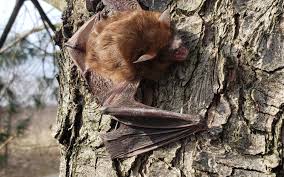Dealing with unexpected animal visitors like bats and squirrels can be a frustrating and worrying experience for any homeowner. Even though they may seem harmless, these furry intruders can cause extensive damage and create health hazards if left unchecked. When it comes to squirrel and bat removal, it’s important to use humane, effective methods. In this article, we’ll explore smart techniques for humanely evicting bats and squirrels from homes while preventing future infestations. With some knowledge and preparation, you can get rid of uninvited wildlife guests while keeping your home intact.
Understanding Bat and Squirrel Behavior
To remove bats and squirrels successfully, you need to understand what attracts them to homes in the first place.
Why Bats Invade Homes
Bats are highly attracted to warm, sheltered areas like attics and eaves to roost and raise their young. The small nocturnal mammals enter through tiny openings and gaps in roof fixtures, siding, and vents. Once inside, they nest and form colonies that can grow rapidly.
What Draws Squirrels Into Homes
Squirrels seek the shelter and food sources that homes provide. Attics offer warm nesting sites, while trash cans, pet food, gardens, and fruit trees supply nourishment. Squirrels gain entrance through small holes in roofs, vents, and foundations.
Health & Safety Risks of Bats and Squirrels
Allowing bats and squirrels to inhabit your home poses some health and safety hazards:
- Damage from chewing/gnawing – Squirrels will chew through wood, insulation, and wires.
- Rabies exposure – Bats are the most common source of rabies infection in humans.
- Accumulation of droppings – Can lead to allergies and disease spread.
- Bites and scratches – Both species will bite/scratch if feeling threatened.
- Noise issues – Noisy movement and vocalizations in walls and ceilings.
- Fire hazard – Electrical wires and insulation damaged by chewing.
These risks make bat and squirrel removal extremely important. But humane, ethical methods are vital.
Bat Removal Tips and Tricks
Here are effective, humane techniques for removing bats from homes:
Seal Entry Points
Inspect the exterior and seal any gaps, holes, or openings with caulk, foam, metal flashing, steel wool, or wire mesh. This blocks access to interior roosts.
Eliminate Roosting Spots
Close off attics, shutters, porches, and other favorite roosting sites. This forces bats to seek shelter elsewhere.
Use One-Way Funnel Excluders
Funnel devices allow bats to exit but not re-enter an area. Place these at primary entry points in the evening after bats have left to feed.
Install Bat Houses
Give evicted bats a new roosting place by putting up nearby bat houses. These provide an exclusion alternative to your home.
Remove Outdoor Food Sources
Eliminating mosquitoes, insects, fruit, and standing water sources makes your home less appealing. Hungry bats will look elsewhere for sustenance.
Use Deterrents
Light, sound, and scent deterrents effectively drive stubborn bats away from your home. Just ensure deterrents are humane and wildlife-safe.
Squirrel Removal Tips
These are the top humane, effective methods for removing squirrels:
Live Trap & Relocate
Humanely trap squirrels in cage traps and release them at least 5 miles from your home in suitable habitat.
Block Entry Points
Seal off every possible entry hole and gap that squirrels can squeeze through. Close up attics and other interior access.
Remove Food Attractants
Eliminate food sources like bird feeders, pet food, unsecured trash, and fallen fruit/nuts from trees. Hungry squirrels will look elsewhere.
Install Exclusion Netting
Netting around gardens, trees, and rooflines prevents squirrels from jumping onto or climbing up them.
Use Repellents
Squirrel repellents with chili pepper, predator urine scent, or methyl anthranilate create discomfort and deter squirrels.
Scare Devices
Use motion-activated sprinklers, noises, ultrasonic repellers, and predator decoys to startle squirrels and make them feel unsafe.
Call Professionals for Severe Cases
For large-scale infestations or issues like stuck animals, damaged wiring, and copious droppings, calling professional wildlife control may be needed. Licensed experts have the skills, legal access, and proper equipment to remove bats and squirrels while remediating damage.
Prevent Future Invasions
Here are some tips to avoid new wildlife problems after removing bats and squirrels:
- Maintain exterior sealant and caulk around holes
- Install chimney caps and vent covers
- Cover window wells and large gaps with hardware cloth
- Keep trash bins secure and pet food inside
- Trim overhanging tree limbs and bushes near roof
- Routinely check the attic and other problem areas
- Never intentionally feed or attract wild animals
With persistence and the right humane removal techniques, you can successfully evict unwanted bats and squirrels. A clean, pest-free home will bring peace of mind and prevent future headaches.
Conclusion
Effectively removing squirrels from your home requires learning their behaviors, utilizing humane deterrents and exclusion tactics, eliminating food sources, sealing up entry points, and staying vigilant about monitoring for future issues. Bat and Squirrel removal takes dedication and effort to humanely evict them, but the payoff is reclaiming your peaceful home. With smart strategies and patience during the process, you can permanently resolve squirrel problems and prevent future invasions.


















